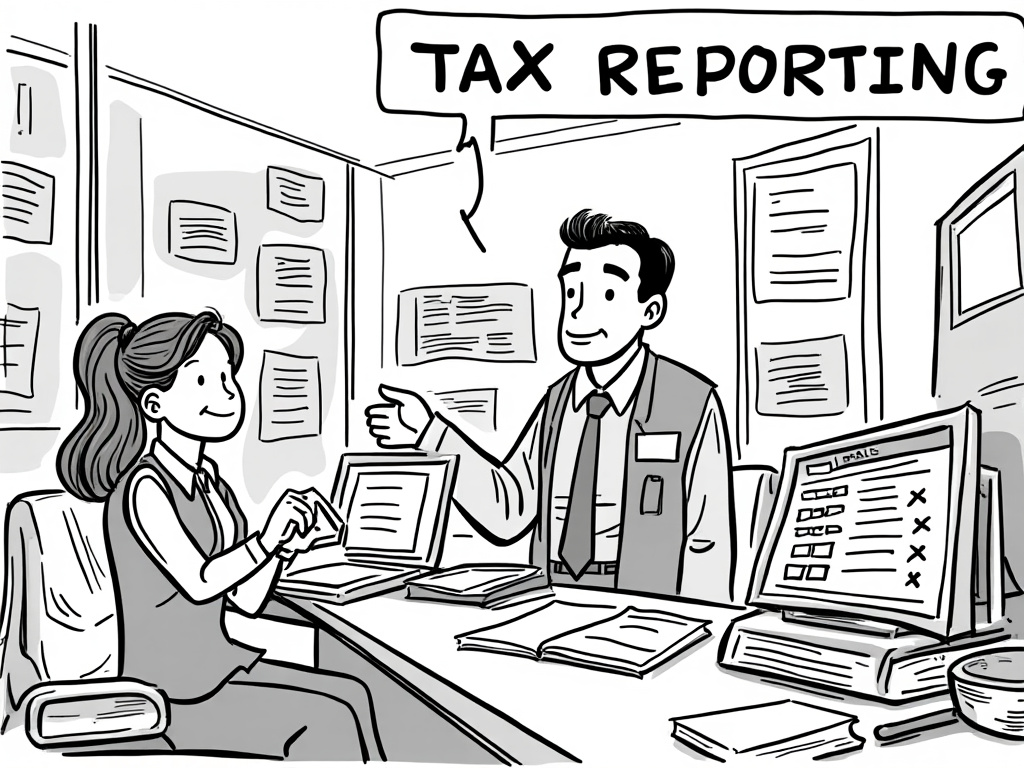
Greece Investment Guide: City Life vs. Island Paradise
Reading time: 18 minutes
Table of Contents:
- Introduction: The Greek Investment Landscape
- Urban Investment Opportunities
- Island Investment Opportunities
- Direct Comparison: City vs. Island
- Legal Considerations & Processes
- Real World Success Stories
- Building Your Greek Investment Strategy
- Frequently Asked Questions
Introduction: The Greek Investment Landscape
Contemplating an investment in Greece? You’re eyeing a market that’s experienced profound transformation. After weathering a decade-long economic crisis that ended in 2018, followed by the global pandemic, Greece has emerged with surprising resilience. Now positioned for meaningful growth, the country offers compelling opportunities across both vibrant urban centers and idyllic islands.
But let’s face the central dilemma head-on: Should you invest in the dynamic pulse of Greek cities or the captivating allure of its islands? The answer isn’t as straightforward as the Mediterranean is blue.
As Georgios Filiopoulos, CEO of Enterprise Greece, notes: “Greece offers distinct investment profiles between its urban centers and islands. Each presents unique advantages and challenges that sophisticated investors must carefully evaluate based on their investment goals, risk tolerance, and desired lifestyle integration.”
This guide cuts through surface-level observations to deliver concrete, actionable insights for your Greek investment journey. Whether you’re considering residential real estate, commercial properties, hospitality ventures, or broader business investments, we’ll examine the nuanced realities of urban versus island opportunities.
Urban Investment Opportunities
Athens: Renaissance of a Classical City
Athens isn’t just experiencing recovery—it’s undergoing a renaissance. The capital city has transcended its recovery phase to emerge as a dynamic investment hub with several distinctive advantages:
- Year-round economic activity – Unlike seasonal island economies, Athens maintains consistent economic momentum across all seasons
- Infrastructure advantages – Benefit from established transportation networks, reliable utilities, and urban amenities
- Diverse market segments – From luxury apartments in Kolonaki to emerging neighborhoods like Kypseli undergoing gentrification
- Startup ecosystem growth – Athens ranks among Europe’s fastest-growing startup hubs, with tech innovation centers flourishing
Consider this scenario: An investor purchased a 100m² apartment in central Athens for €150,000 in 2017. Following strategic renovations of €30,000, that same property now commands €320,000—representing a 78% return on investment within five years. Short-term rental yields in prime Athenian neighborhoods currently average 7-8% annually, significantly outpacing many Western European capitals.
Elias Athanasiou, former CEO of Enterprise Greece, observes: “Athens presents a rare convergence of value—properties remain 30-40% below their pre-crisis peak while delivering rental yields that significantly outperform comparable European urban centers.”
Thessaloniki: Northern Star Rising
Greece’s second-largest city offers compelling alternatives to Athens with several distinct advantages:
- Lower entry points – Property prices average 15-25% below comparable Athenian neighborhoods
- Strategic location – Gateway to the Balkans with multimodal transportation options
- University influence – Strong rental demand from 150,000+ university students
- Urban regeneration – Major projects transforming the city, including the €1.5 billion waterfront redevelopment
Here’s a real investor perspective: “We pivoted from Mykonos to Thessaloniki in 2019, acquiring eight residential units that we converted to student housing. Our annual return consistently exceeds 8.5%, with substantially lower seasonality risk and maintenance costs compared to our island investments.”
Pro Tip: Neighborhoods undergoing regeneration like Ano Poli and areas near the port represent potential value opportunities that combine heritage charm with development potential.
Island Investment Opportunities
Premium Island Markets: Mykonos, Santorini, and Paros
Greece’s premier islands represent a distinct investment category with unique characteristics:
- Exceptional capital appreciation – Premium Santorini properties have appreciated 122% on average over the past decade
- Ultra-luxury segment growth – Properties exceeding €5 million have seen transaction volume increase by 30% since 2019
- Global demand resilience – These markets attract international buyers less affected by domestic economic conditions
- Brand premium – The established international cachet of islands like Mykonos commands intrinsic value
Let me share a revealing case study: A boutique hotel purchased on Santorini in 2015 for €2.2 million underwent a €800,000 renovation focusing on authentic design elements and sustainability. It now generates annual revenue exceeding €600,000 with a net operating income of approximately €380,000—representing a 12.6% annual return on the total investment.
Elena Kountoura, former Minister of Tourism, notes: “Greece’s premium islands aren’t merely vacation destinations; they’ve evolved into global luxury lifestyle brands that command corresponding investment premiums and maintain surprising resilience during broader market fluctuations.”
Emerging Island Opportunities: Looking Beyond the Icons
Savvy investors increasingly look beyond the established premium markets to emerging island opportunities:
- Infrastructure improvements – Islands like Syros and Tinos have seen significant investment in accessibility and facilities
- Value proposition – Entry costs 40-60% lower than premium islands while capturing similar tourism growth trends
- Authenticity premium – Growing market segment seeking “genuine Greek experiences” beyond mainstream destinations
- Extended seasonality potential – Many emerging destinations focusing on expanding beyond traditional summer season
Consider this investment perspective: “After analyzing premium and emerging island markets, we invested in a small complex of four traditional houses on Sifnos in 2018, with an all-in cost of €850,000. We’ve achieved 85% occupancy during the six-month season with average nightly rates of €280, delivering ROI that rivals Mykonos but with significantly lower entry costs.”
Direct Comparison: City vs. Island
Let’s examine the fundamental differences between urban and island investments across crucial decision factors:
| Investment Factor | Urban Centers | Islands |
|---|---|---|
| Seasonality Impact | Minimal – year-round economic activity | Significant – 4-7 month primary season depending on island |
| Maintenance Requirements | Moderate – established service providers readily available | High – salt air damage, seasonal preparations, limited service providers |
| Rental Yield (Avg.) | 6-8% (Athens prime areas) | 4-6% annually (but concentrated in season) |
| Capital Appreciation (10yr) | 35-45% (prime areas) | 60-120% (premium islands), 30-50% (emerging islands) |
| Market Liquidity | High – diverse buyer pool across segments | Variable – premium islands: high; smaller islands: potentially limited |
Investment Performance Comparison
10-Year ROI Comparison (2013-2023)
This performance snapshot reveals interesting patterns: while premium islands have delivered superior overall returns, they’ve also experienced greater volatility. Urban investments typically offer more moderate but consistent growth trajectories, particularly in emerging neighborhoods undergoing transformation.
Legal Considerations & Processes
Golden Visa Program: Investment Gateway
Greece’s Golden Visa program remains one of Europe’s most attractive residency-by-investment options, but recent changes have created important distinctions between urban and island investments:
- Minimum investment threshold changes – Now €500,000 in Athens and Thessaloniki; remains €250,000 in islands and regional areas
- Residency benefits – Program provides residence permits for investors and immediate family members
- Movement flexibility – Visa holders can travel freely throughout the Schengen Zone
- Physical presence requirements – No minimum stay requirements to maintain residency status
“The bifurcated investment threshold creates compelling opportunities for investors seeking both Golden Visa access and value opportunities,” explains Alexandros Risvas, a leading immigration attorney. “Many of our clients are now strategically investing in island properties or regional locations to secure residency while deploying their remaining capital in urban markets for diversification.”
Critical Ownership Considerations
Property ownership structures and requirements differ significantly between urban and island investments:
- Border area restrictions – Many islands require additional permits for non-EU citizens
- Historical protection zones – Urban properties often face stricter renovation restrictions in heritage areas
- Forest land classifications – More prevalent issue on islands that can affect development potential
- Building coefficient variations – Islands typically have more restrictive build density regulations
Pro Tip: Engage an experienced lawyer with specific expertise in your target region. Legal requirements and practices can vary significantly between islands and urban centers, with local relationships often proving invaluable for navigating bureaucratic processes.
Real World Success Stories
Urban Transformation: The Athens Riviera Project
The Ellinikon project represents Europe’s largest urban redevelopment, transforming Athens’ former international airport into a sustainable, mixed-use coastal district. This €8 billion investment encompasses luxury residences, hotels, retail, office space, and recreational facilities across 620 hectares.
Early investors who secured residential units during the initial offering phase have already seen paper gains exceeding 25%. As Maria Kontomichalou, a property investor who purchased two units in 2021, explains: “We recognized that combining the Athens Riviera location with the master-planned approach created a unique value proposition—essentially prime waterfront real estate with urban convenience and infrastructure.”
The strategic insight here applies beyond this specific project: identify urban areas benefiting from transformative infrastructure investments that create new market positioning.
Island Innovation: Sustainable Luxury in Paros
When Nordic entrepreneurs Elsa and Henrik Brandt acquired a weathered stone farmhouse and surrounding land on Paros in 2016, their €580,000 investment raised eyebrows. Their vision: create a sustainable luxury retreat that would command premium rates while operating nearly off-grid.
Their approach integrated traditional Cycladic architecture with cutting-edge sustainability technology—solar power, water reclamation, and organic gardens. The resulting five-suite property now generates approximately €220,000 annually during a 7-month operating season, representing a remarkable transformation from abandoned agricultural property to luxury destination.
“We identified the convergence of two powerful trends: luxury travelers increasingly seeking authentic experiences and growing demand for environmentally responsible accommodations,” Henrik explains. “This positioning allows us to command rates comparable to Mykonos while operating on an island with significantly lower acquisition costs.”
Building Your Greek Investment Strategy
Hybrid Approach: The Emerging Best Practice
Rather than viewing the city versus island decision as binary, sophisticated investors increasingly adopt hybrid strategies that leverage the complementary advantages of both markets:
- Risk diversification – Urban properties provide consistent returns while island investments offer higher appreciation potential
- Seasonal complementarity – Balance high-season island demand with year-round urban economics
- Portfolio construction – Urban core properties (80%) with island opportunity assets (20%) creates balanced exposure
- Operational efficiency – Establish management infrastructure in urban centers that can extend to island properties
As Dimitris Andriopoulos, CEO of Dimand Real Estate Development, observes: “The most sophisticated investors we work with have moved beyond the false dichotomy of city versus island. They recognize that a thoughtfully constructed portfolio incorporating both elements often delivers superior risk-adjusted returns while providing operational synergies.”
Strategic Investment Timeline
Consider this strategic phased approach to building a Greek investment portfolio:
- Initial Acquisition (Year 1): Urban apartment in established area providing reliable rental yield and lower management requirements
- Expansion Phase (Years 2-3): Add emerging neighborhood property with value-add potential through strategic renovation
- Diversification (Years 3-5): Integrate island property, potentially with development component to capture appreciation
- Portfolio Optimization (Years 5+): Selectively divest mature properties and reinvest in emerging opportunities
This measured approach allows investors to build local knowledge, establish networks, and develop operational capabilities progressively rather than attempting to navigate multiple markets simultaneously.
Your Greek Investment Roadmap: Strategic Navigation
As we’ve explored throughout this guide, the “city versus island” question ultimately misses a more nuanced reality: your optimal Greek investment approach likely incorporates elements of both. The key is alignment with your investment objectives, risk tolerance, and involvement preferences.
Consider this decision framework as your strategic compass:
- Prioritize urban investments if you value: consistent returns, operational simplicity, portfolio liquidity, and gradual appreciation
- Emphasize island opportunities if you seek: capital appreciation potential, lifestyle integration, tourism sector exposure, and distinctive property characteristics
- Implement a hybrid strategy if you aim for: risk diversification, complementary seasonal economics, and balanced exposure to Greek market dynamics
Remember that Greece represents not just an investment destination but a market in transformation. The country’s continued economic evolution, infrastructure development, and shifting tourism patterns will create emerging opportunities in both urban and island contexts.
As property investor Eleni Maragkoudaki aptly observes: “The most successful investments in Greece aren’t merely financial transactions—they represent a deep engagement with a place, its people, and its potential. When you approach Greek property as both a financial and cultural proposition, you unlock its true value.”
What vision will you bring to your Greek investment journey? And how might combining urban pragmatism with island potential create your optimal pathway forward?
Frequently Asked Questions
How do property taxes compare between Greek islands and major cities?
Property tax burdens (ENFIA tax) generally favor island properties, though the difference isn’t dramatic. Urban properties in premium areas like Kolonaki or Glyfada typically face 15-25% higher ENFIA assessments compared to similar-valued island properties. However, this advantage is often offset by higher island municipality fees (δημοτικά τέλη) that fund infrastructure maintenance. The true differentiator lies in income taxation—short-term rental income is taxed identically regardless of location (starting at 15% up to 45% for higher income brackets), while long-term rentals receive more favorable treatment with a flat 15% rate after expenses, making them particularly advantageous for urban properties with year-round rental potential.
What are the main operational challenges specific to island properties?
Island properties present four distinct operational challenges compared to urban investments. First, seasonal workforce dynamics make staffing difficult, with quality personnel commanding premium wages during high season. Second, maintenance costs typically run 30-40% higher due to salt air exposure, seasonal weatherproofing requirements, and limited contractor availability. Third, utility reliability varies significantly, often necessitating investments in backup systems (water storage, generators). Finally, transportation logistics create complexity for renovations and maintenance, with materials often costing 15-25% more than mainland equivalents due to shipping requirements. These factors collectively require more hands-on management and higher operational reserves compared to urban properties.
How liquid are property investments in Greece’s islands versus its cities?
Market liquidity varies dramatically across Greece’s property landscape. Premium Athens neighborhoods consistently demonstrate high liquidity, with well-priced properties typically selling within 45-60 days. Thessaloniki and other major urban centers show moderate liquidity with typical marketing periods of 2-4 months. Island properties present a bifurcated market: premium islands (Mykonos, Santorini, Paros) maintain strong liquidity for quality properties, particularly in the €750,000-€3,000,000 range. However, properties on smaller or less internationally recognized islands may require 6-18 months to sell, with highly seasonal buyer activity concentrated between March and September. This liquidity differential should factor significantly into investment exit planning, particularly if you anticipate needing to divest during unpredictable market conditions.




